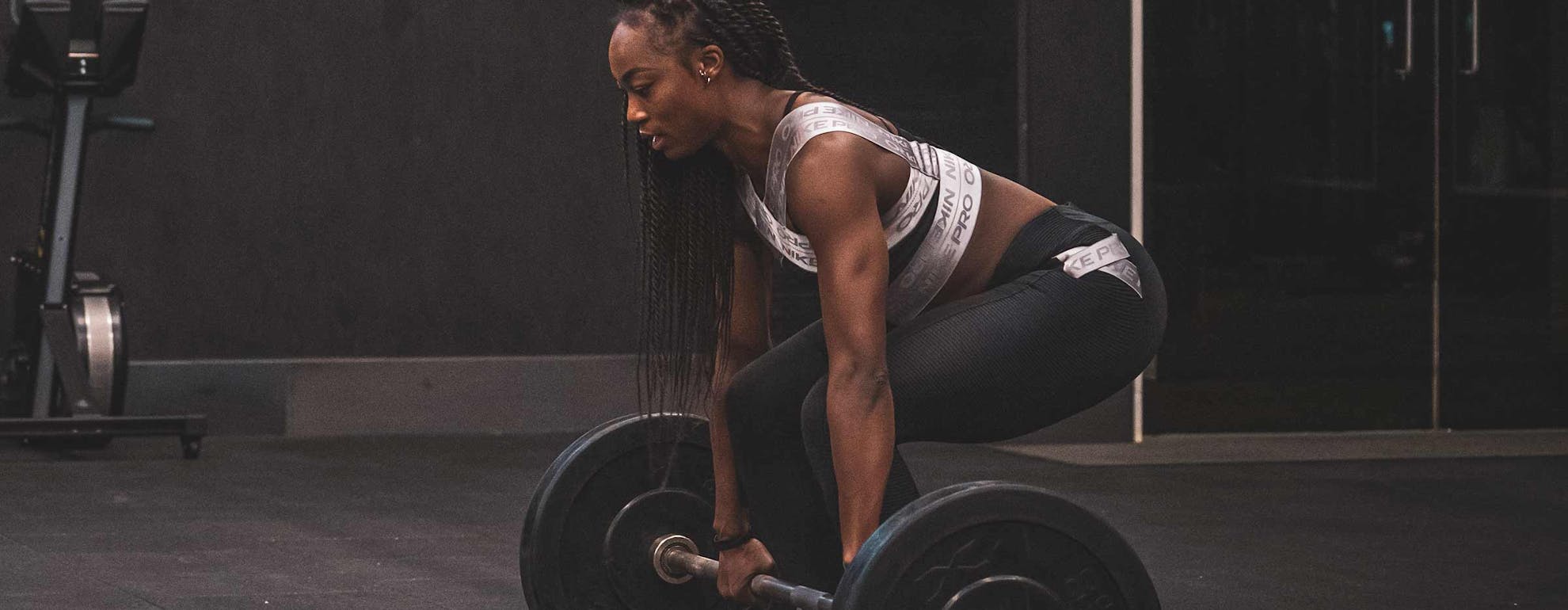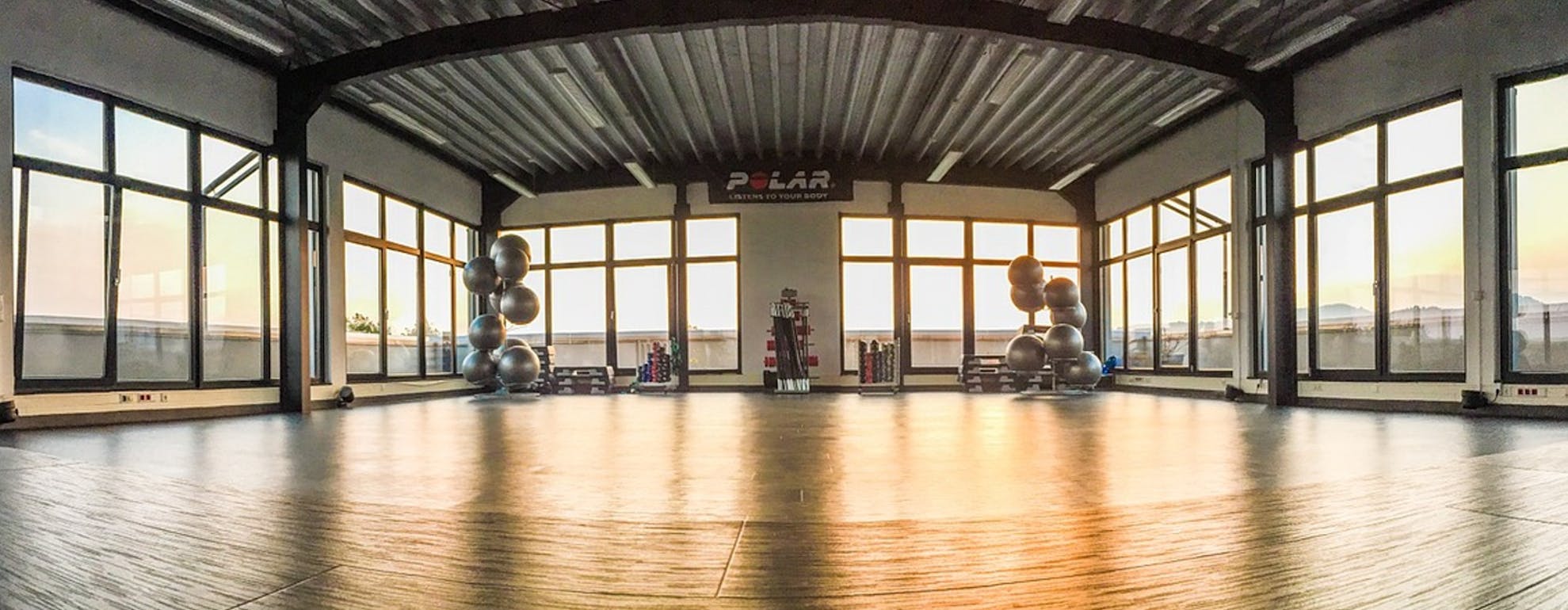
Training
How to lift weights without getting bulky
The reign of cardio is being shaken and current trends are singing the praises of resistance/weight training for both men and women. However, years of seeing body builders and strong men competitors in the media has culminated in a strong belief that weight training will turn you into an Arnold Schwarzenegger look-a-like whether you like it or not!
Good news – this isn’t true, strength does not necessarily equal size and vice versa. Sportsshoes.com has spoken to top track athlete and Nike and Sportsshoes.com ambassador Risqat Fabunmi Alade (@fabbyfabunmi) to find out more:
ㅤ
STRENGTH TRAINING VS. HYPERTROPHY TRAINING
To accept that strength training won’t necessarily make you big, you first have to understand what strength training is and the difference between strength and hypertrophy (muscle gain/size) training. Muscular strength is the ability of a specific muscle or muscle group to carry out work against a resistance. It’s the maximal force you can apply against a load whereas muscle hypertrophy is the term given to the physiological increase in the size of muscle tissue. Both training methods include lifting weights but the key difference is HOW, the type of training will change depending on your goals; by varying the reps (repetitions) and load you stimulate different physiological changes to muscle.
For strength training you need to be working closer to maximum effort and therefore a lower rep-range than hypertrophy or endurance. A load of 75-85% of your 1 rep max (1RM) for 3-6 reps is a good place to start developing strength. Recovery time is specific too; to allow the muscles and nervous system to recover adequately you need to take 1.5 – 3mins of rest in-between strength sets. In contrast, hypertrophy typically demands a higher number of reps (8-15) at a more moderate intensity & lighter load (50-70% 1RM) with shorter rest; 60-90s. Strength is not determined by the amount or size of muscle on your frame but the load you can shift! (This does not mean those with hypertrophy goals should completely forgo building strength).
Hypertrophy to the extent of building an incredibly lean physique with bulging muscles does not happen by accident and is usually the result of a meticulous training regime and nutritional programme. An average (male) beginner lifter can expect to gain around 1kg of muscle mass month, and an intermediate lifter slightly less, with the rates of growth for women a touch slower. Energy balance (calories in vs. calories out) is a key factor in maintaining, losing or gaining mass. In strength training a well-rounded nutritional approach including plenty of protein to assist in muscle repair is enough. However, hypertrophy demands a calorie surplus so the body has enough energy to enter an anabolic (muscle building) state. If you’re not consuming enough calories you will not ‘bulk’. So again, specificity is king. It’s important to recognise that not all weight gain is equal and it’s often easier to gain fat than gain muscle. Don’t overdo your post-workout refuel - A meal consisting of good quality protein and a moderate amount of carbohydrates will aid your recovery but if you inhale 20 chicken wings and a mountain of rice + brownies post session, chances are you’ll start gaining size as you stimulate the body to do so. Also, consider your body composition and measurements in your journey.
Ladies this one is for you, naturally lower testosterone levels (amongst other things) limit our ability to gain muscle in comparison to men, so a top tip, don’t compare yourself to them, we have around one-tenth of the testosterone men have. In my experience as a PT, women in particular worry about getting ‘big’ arms and shoulders and back muscles however, women also tend to have on average of around 30% less upper-body muscle mass than males. These same women also tend to want toned (leaner looking) arms, shoulders & backs so don’t leave out the weights all together.
Strength training will only make you…stronger, coupled with a host of other benefits. For the cardio bunnies, consider this, are calories burned from cardio and resistance training equal? Some studies suggest that resistance training triggers greater fat-burning responses, one by Dr Nigel Harris, a senior lecturer in Exercise Science at Auckland University of Technology and published in the Journal of Science and Medicine in Sport claims that after a strength session these is a 56% greater increase in human growth hormone (HGH) in women when compared to cardio. And others have found similar results in men. What’s HGH? A hormone increased by exercise (and other additional factors) that oxidizes fat and assists muscle tissue synthesis but isn’t shown by immediate calorie burn on fitness trackers etc. Think longevity of benefits, rather than just sweat fest. Strength training is also known to improve cognitive thinking, mental health, sleep quality, bone density and non-communicable diseases such as diabetes, obesity, heart disease & even some cancers – it’s good for you inside and out. To top it off for the sporty bunch, no matter your activity be it running, climbing, dancing, boxing, cycling, yoga etc being stronger is never a weakness and will always contribute to an improved performance. Lastly, if weight loss is your goal, commit to some strength training and watch your body change. An intense session working against heavy resistance results in significant energy expenditure, remember energy balance – calories in vs calories out? Strength training can help put you into a calorie deficit putting you on the path to losing a few kg. Research has shown that those who added strength sessions alongside aerobic (cardio) observed that combined training decreased abdominal subcutaneous fat and visceral fat more than aerobic training only! In support of these findings x2 strength sessions a week are recommended by UK physical activity guidelines. Can’t argue with that, get lifting!
That’s that myth busted, no excuses strength training is not your enemy but very much your friend. Here’s a full body strength workout that I have put together to get your started:
ㅤ
FULL BODY STRENGTH WORKOUT:
Make sure you do a sufficient whole body warm up including some mobility & glute (bum) activation such as glute bridges or clams, saving the static stretching for afterwards. This work out has strength as a primary focus, using supersets of exercises with slightly more reps to increase energy expenditure. Remember, low reps = use a heavy weight e.g. you shouldn’t be able to do 10-12 reps of a weight where is says 6 reps.
A1 Barbell hip thrust 3×6
A2 Single arm dumbbell row 3×8
B1 Dumbbell Bulgarian split squat (off a bench/box) 3×6 (beginner can use bodyweight)
B2 Bench (beginner) Flat (intermediate) or Decline (advanced) Push ups 3×8-10
C1 Standing barbell overhead press 3×6
C2 High plank (on your hands) with shoulder tap 3×16 BW (bodyweight) 8 taps per shoulder
Looking for some training tips and advice? Then head over to our Training category where our athletes and experts explain everything you need to know.
Welcome
Welcome to the SportsShoes Training Hub! We’ve teamed up with athletes and experts to bring you the very best advice on how to maximise your workouts and achieve your best results.
Read More
Share this
Featured articles
View All



